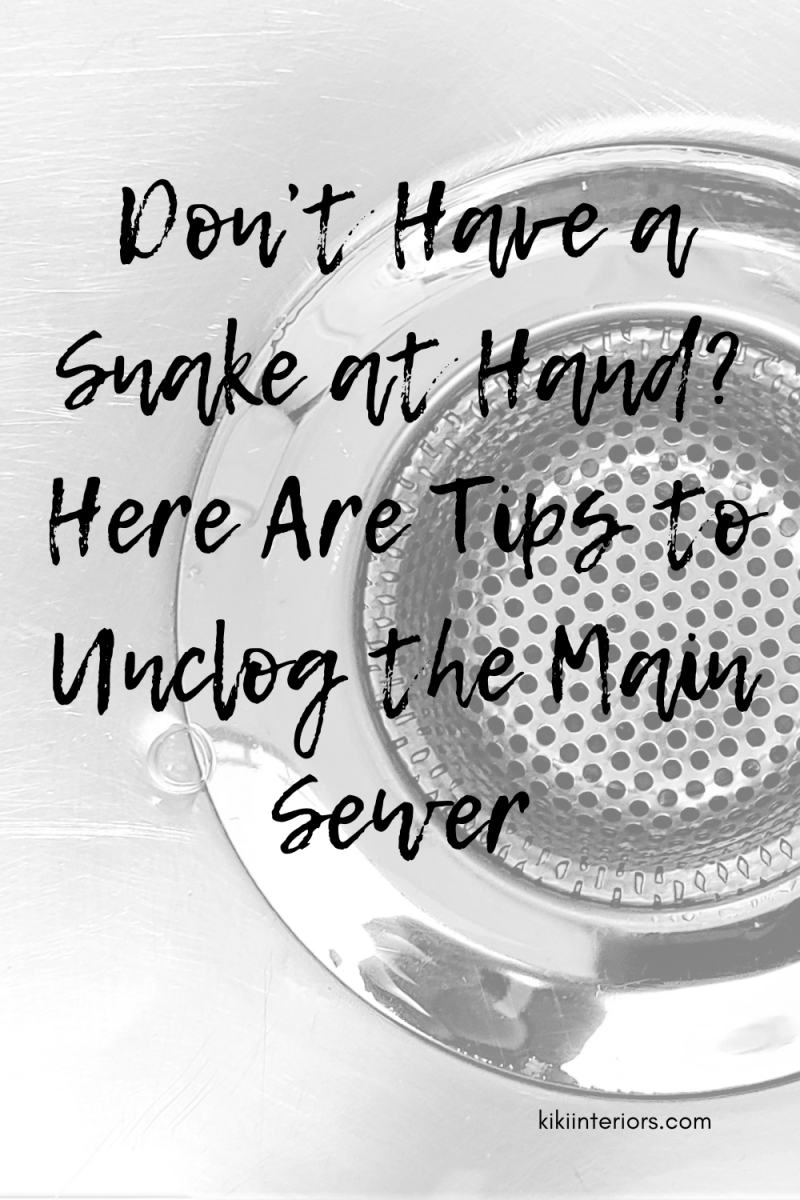
Sewer blockages are common and often start with a small buildup. With the main culprits being grease, toilet paper, hair, and soap scum, sewer blockage is not something to take lightly. Foreign objects such as tree roots could also blockage. Whatever the case, addressing the problem on time could prevent inconveniences and save money. Although drain snakes are usually effective, property owners can use other methods to unclog the sewer.
Ways to Unclog the Main Sewer
It is important to determine the cause of the problem first. As mentioned earlier, the blockage is often associated with everyday use of the drainage system. On rare occasions, the sewer blockage can stem from corrosion, which is why experts recommend PVC pipes instead of metal pipes. Also, sagging of pipes caused by soil movement could lead to main sewer blockage. Here’s how to unclog the main sewer
Hydro jetting involves blasting water through a flexible hose at high pressure to eliminate clogs. Therefore, homeowners experiencing stubborn blockages would benefit from idaho hydro jetting services. Some telltale signs include stinky drains, slow-running drains, water backing up, and noisy pipes. An experienced plumber performs a video line without snaking tools.

1. Hydro Jetting
An inspection and then uses the hydro jetting machine to dislodge objects and flush them out of the plumbing system.
2. Hot Water
Sometimes, the sewer line only requires a gush of hot water to remove the clog. This method is ideal if the blockage is a buildup of waste materials in the kitchen sink cause clogging. Running hot water for about ten minutes could loosen grease and other accumulated fat and food items, pushing it out of the system. Consider hydro jetting if the buildup has been there for a long time.
3. Plunger
Plungers use hydraulic pressure to break down clogs. It’s important to use the right plunger for effective results. For example, accordion and flange plungers are perfect for toilets since they generate more suction. In comparison, the cup plungers work on floor drains and sinks. All one needs to do is pull and push to force water to shift downward while the clog moves in a different direction.
4. Baking Soda
Baking soda is an excellent alternative if a drain snake is unavailable. It works by dissolving grease and mineral deposits. This method requires the property maintenance workers to pour half a cup of baking soda and let it sit for a few minutes before pouring hot water into the clogged drain. They can also pour the baking soda and the table salt and let it sit overnight before flushing it with hot water.
5. Wet Dry Vacuum
A vacuum uses the same concept as a plunger. The first step is to clear the drain opening using a screwdriver and remove the overflow cover if the blockage is on the sink or bathtub. The next step is to open the faucet and let the water fill the clogged area before covering the overflow hole and draining it with a rag. The final step would be to create a seal by pushing the wet-dry vacuum hose on the drain, then turn it on, and the suction will unclog the drain.
A clogged sewer line comes with various risks. The sewer backup often leads to a foul smell and could spread diseases. Additionally, the property may suffer structural damage, mold proliferation, and flooding. Therefore, once detected, it would be best to take these steps to fix the problem. Hiring a seasoned plumber is ultimately the best option for extreme blockages.



